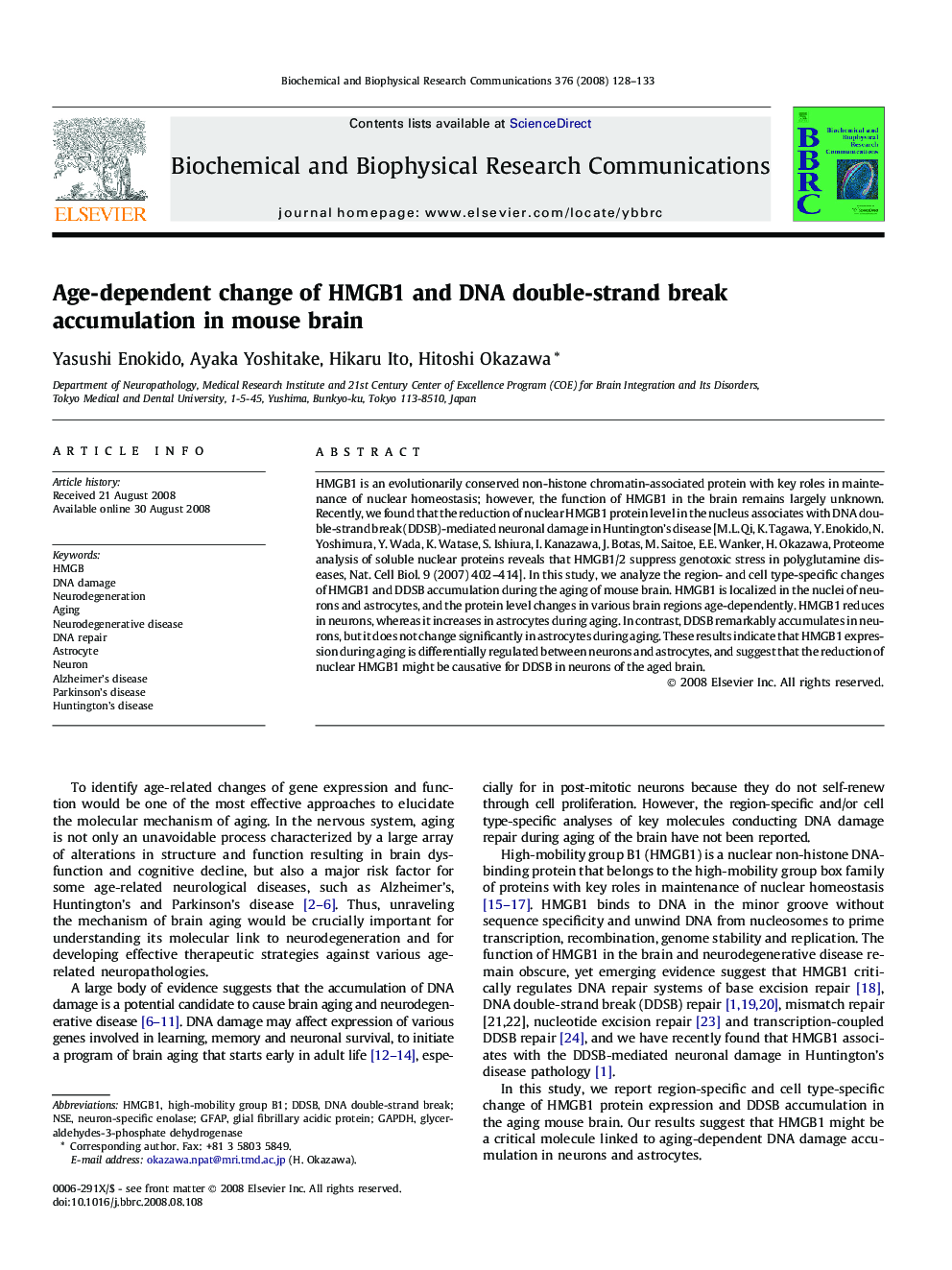| کد مقاله | کد نشریه | سال انتشار | مقاله انگلیسی | نسخه تمام متن |
|---|---|---|---|---|
| 1934307 | 1050637 | 2008 | 6 صفحه PDF | دانلود رایگان |

HMGB1 is an evolutionarily conserved non-histone chromatin-associated protein with key roles in maintenance of nuclear homeostasis; however, the function of HMGB1 in the brain remains largely unknown. Recently, we found that the reduction of nuclear HMGB1 protein level in the nucleus associates with DNA double-strand break (DDSB)-mediated neuronal damage in Huntington’s disease [M.L. Qi, K. Tagawa, Y. Enokido, N. Yoshimura, Y. Wada, K. Watase, S. Ishiura, I. Kanazawa, J. Botas, M. Saitoe, E.E. Wanker, H. Okazawa, Proteome analysis of soluble nuclear proteins reveals that HMGB1/2 suppress genotoxic stress in polyglutamine diseases, Nat. Cell Biol. 9 (2007) 402–414]. In this study, we analyze the region- and cell type-specific changes of HMGB1 and DDSB accumulation during the aging of mouse brain. HMGB1 is localized in the nuclei of neurons and astrocytes, and the protein level changes in various brain regions age-dependently. HMGB1 reduces in neurons, whereas it increases in astrocytes during aging. In contrast, DDSB remarkably accumulates in neurons, but it does not change significantly in astrocytes during aging. These results indicate that HMGB1 expression during aging is differentially regulated between neurons and astrocytes, and suggest that the reduction of nuclear HMGB1 might be causative for DDSB in neurons of the aged brain.
Journal: Biochemical and Biophysical Research Communications - Volume 376, Issue 1, 7 November 2008, Pages 128–133